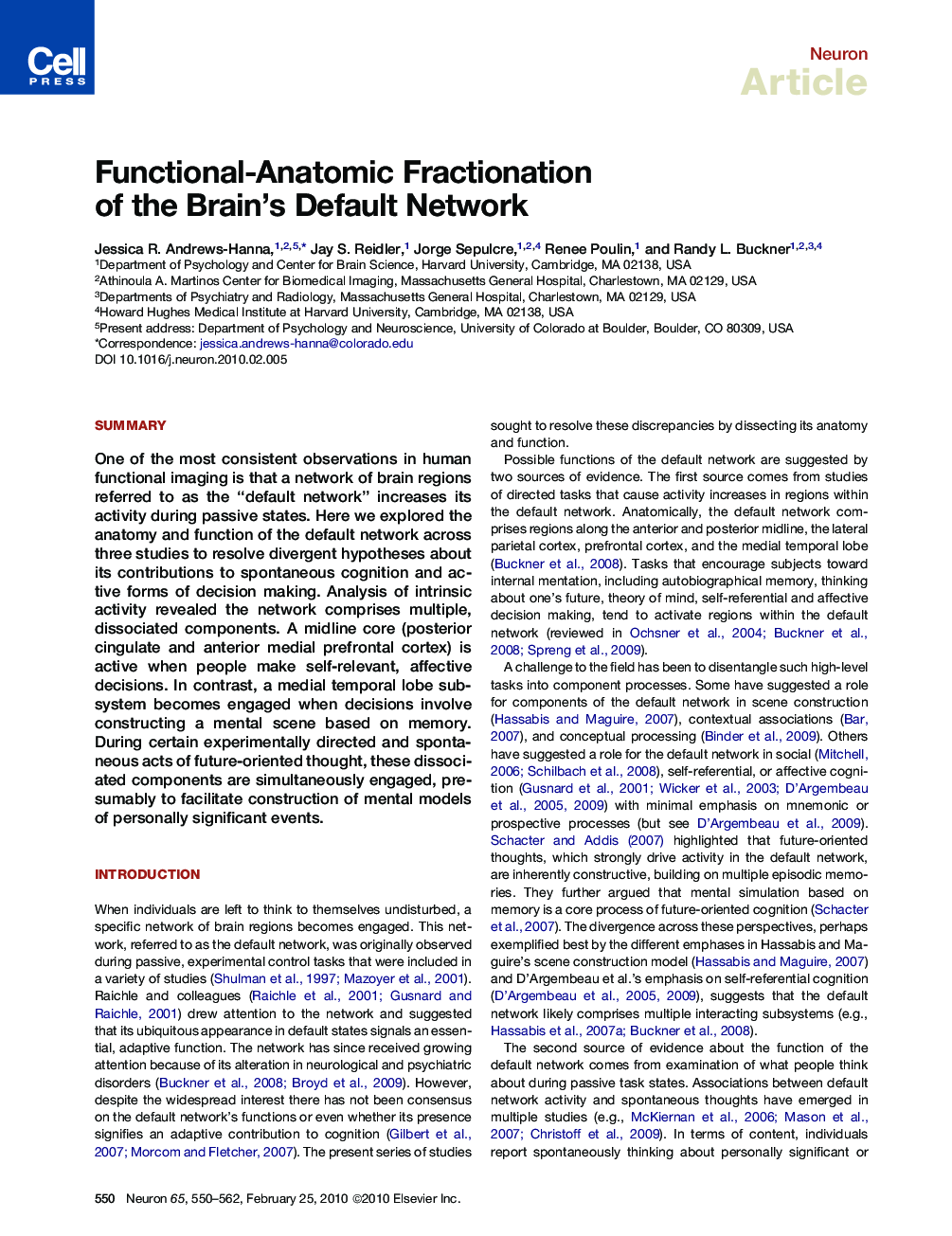| Article ID | Journal | Published Year | Pages | File Type |
|---|---|---|---|---|
| 4322656 | Neuron | 2010 | 13 Pages |
SummaryOne of the most consistent observations in human functional imaging is that a network of brain regions referred to as the “default network” increases its activity during passive states. Here we explored the anatomy and function of the default network across three studies to resolve divergent hypotheses about its contributions to spontaneous cognition and active forms of decision making. Analysis of intrinsic activity revealed the network comprises multiple, dissociated components. A midline core (posterior cingulate and anterior medial prefrontal cortex) is active when people make self-relevant, affective decisions. In contrast, a medial temporal lobe subsystem becomes engaged when decisions involve constructing a mental scene based on memory. During certain experimentally directed and spontaneous acts of future-oriented thought, these dissociated components are simultaneously engaged, presumably to facilitate construction of mental models of personally significant events.
► The default network activates when people think passively to themselves ► Intrinsic activity reveals the default network involves component subsystems ► The subsystems can be functionally dissociated during active task decisions ► Item and strategy analysis suggests distinct processing roles for the subsystems
